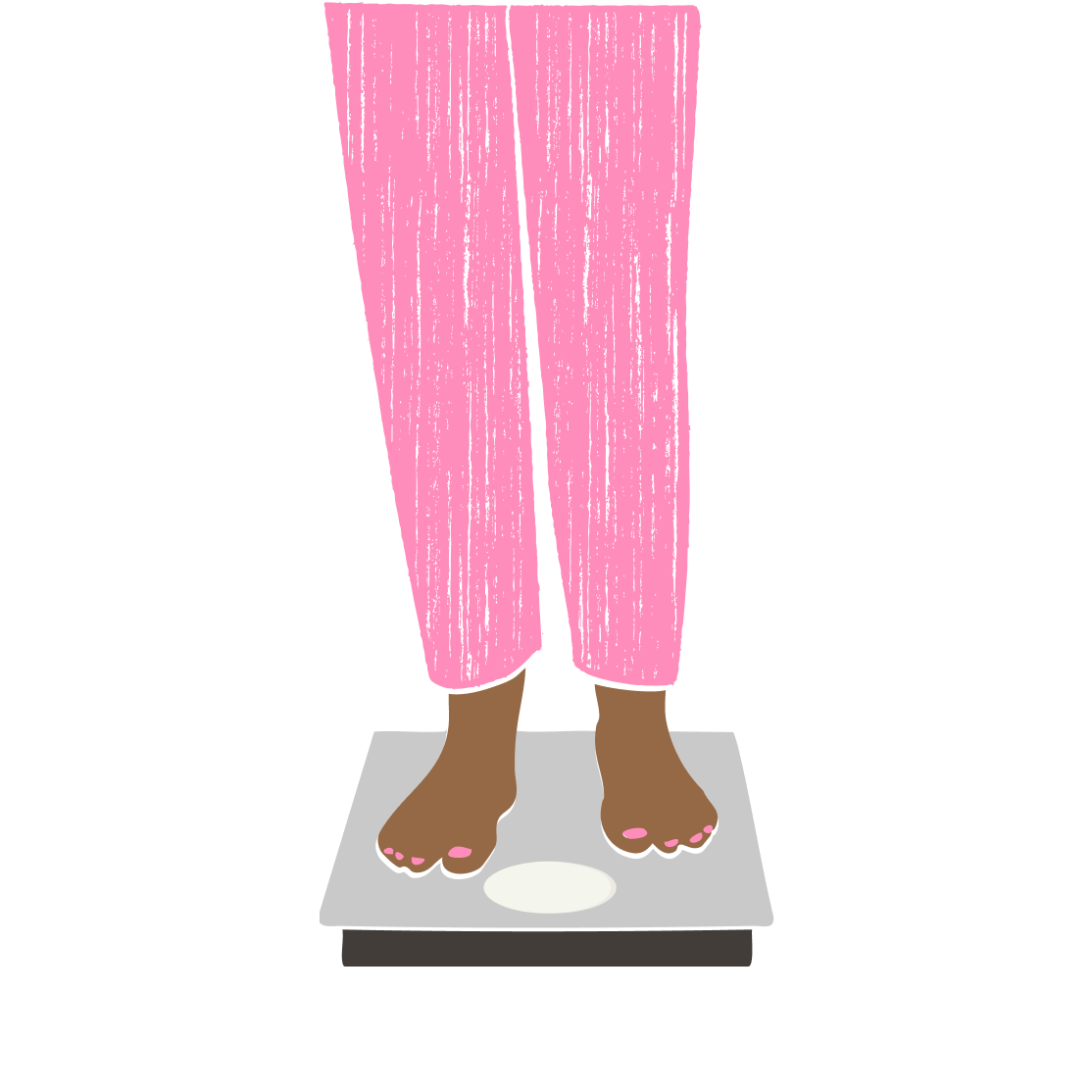Menstrual-like cramps during menopause are common, typically linked to hormonal fluctuations, just like hot flashes, brain fog, and night sweats. While often a normal part of the menopause transition, these cramps can sometimes signal an underlying issue. If they’re interfering with your daily life, consulting a healthcare provider can help alleviate symptoms, offer guidance, and provide the support you need.
As your period comes to an end when you reach menopause, one symptom may surprisingly stick around — even once your period stops. Yep, we’re talking about cramps. Many women experience menstrual-like cramps during menopause without an accompanying period.
Most of the time, these cramps are a typical part of the menopause transition, caused by the same hormonal fluctuations that can bring on hot flashes, brain fog, and night sweats. However, sometimes cramping can point to a more serious underlying condition.
Don’t let your medical team downplay any pain you feel, especially when it’s connected to your period or menopause. Because cramping during menopause could be a symptom of other conditions, like polyps or fibroids, it’s important to find a healthcare provider who will listen.
At Midi, we know how positive a woman's menopause experience can be when she works with a healthcare provider who takes her symptoms seriously. Midi clinicians have extensive training in women’s midlife health, so they understand the “why” behind everything from menopause and weight gain to insomnia and painful sex. And they can offer a range of solutions, including prescription medications, supplements, and lifestyle coaching.
Read on to learn more about why cramps can be common during the menopause transition and what you can do to find relief.
Is it Normal to Have Cramps but No Period During Menopause?
For most of your life, if you experienced menstrual cramps, they were usually a sign that your period was about to make an appearance or was in full swing. So it’s natural to be confused and maybe even a little worried if the same feeling no longer accompanies your flow. Understanding what’s happening in your body can help demystify symptoms associated with the menopause transition.
Cramping Without Menstruation in Menopausal Women
Experiencing cramps but no menstrual flow—or just a little bit of spotting—is a common symptom during perimenopause. But keep in mind: Spotting after you’ve gone a full year without a period (aka menopause) is not normal and warrants an immediate trip to the doctor.
Women experience more pain in general during and after menopause, and this can apply to the reproductive system as well. Your endocrine system stops producing as much estrogen in a relatively short amount of time, and the rest of your body needs time to catch up, leading to symptoms like cramping.
Though we can’t predict whether or not you’ll experience menopausal cramps, there are a few noted risk factors. If you’ve had a history of painful cramps before your periods, you’re more likely to have menopausal cramps as well. A history of endometriosis or PCOS also increases the likelihood you’ll cramp as you approach menopause and beyond. Lifestyle factors, including weight, activity level, and blood pressure, may also play a role.
Menopause symptoms vary enormously from one woman to the next. Some might not experience any cramping at all, while for others it could be a regular challenge. To get personalized recommendations based on your symptoms and health history, you can book a virtual visit with a menopause specialist through a platform like Midi.
Menopausal Cramps vs. Other Health Issues
How can you tell if the cramping you’re experiencing is just a normal part of the menopause transition or a sign of something else? When you’re still getting a period during perimenopause, even sporadically, it can be difficult to distinguish menopausal cramps from menstrual cramps.
In general, menopausal cramps tend to be similar to your menstrual cramps. They’re cyclical, occurring around the same time your period would have arrived. They’ll feel similar, too. Expect the pain or discomfort to be localized to your lower belly and pelvic area. These cramps will generally respond to pain-relief methods that were effective for you before perimenopause, like heating pads and over-the-counter medications.
That said, there are a few signs that your cramping is worth medical attention. If your cramps are significantly more intense or painful, continue for several days at a time, or are accompanied by pain in other parts of your body, the root cause may not be related to changing hormones. And if cramping is associated with postmenopausal bleeding or spotting, you should be evaluated right away. Talk to your doctor or a Midi clinician about any cramping you’re experiencing.
What Is Perimenopause, and How Can It Impact Cramping?
Think of perimenopause like “menopause eve.” It generally begins in your mid-40s (although it can start as early as your late 30s) and marks the beginning of the end of your reproductive years. Perimenopause can last for three to five years, but for some it can stretch on for up to a decade. During this time, you’ll experience some symptoms that are the result of fluctuating and declining estrogen and progesterone, two hormones that your body needs less of as you reach the end of your reproductive years.
Perimenopause can be a distinctly confusing time. You're still getting periods, but they’re likely becoming irregular—as many as 78% of women experience longer and heavier periods during the menopause transition and weeks to months may pass between your cycles. Your cramps may herald the coming of a new period or just crop up independently.
During perimenopause, it’s wise to consult with a specialist. Midi clinicians have heard–and treated it all. They can work with you to make sense of your seemingly disparate symptoms and help you find relief.
When to Seek Medical Advice for Cramps During Menopause
If your cramps are disrupting your life in any way—causing you to call out of work, preventing regular exercise, or otherwise forcing you to change your routine to accommodate the pain— then it’s time to seek out support from a healthcare provider. Even if the root cause of your pain is menopausal hormonal fluctuations, with guidance from a specialist, you can find ways to ease these and other hormonal symptoms.
However, less severe pain can be a cause for concern as well. Typical menopausal cramps mimic the ebb and flow of menstrual cramps, so they should fade away at some point. Call a healthcare professional for an examination if you experience consistent cramping for more than five to seven days.
When meeting with a menopause specialist or gynecologist to discuss your cramps, expect an in-depth discussion of your medical history and typical menstrual cycle. Depending on your symptoms and history, your healthcare provider may order some diagnostic tests such as a pelvic exam, blood test, or an ultrasound. These tests help determine (or rule out) the potential causes of your cramps and guide your treatment.
Why Do Menopausal Women Have Cramps?
Cramping can be normal, but what causes these menstrual cramps with no actual menstruation?
Hormonal Fluctuations and Uterine Activity
When you enter perimenopause, many women experience a change in their cyclic hormone patterns. Instead of ebbing and flowing in a regular cycle, a woman may experience significant hormonal fluctuations. This is the root cause of most menopause symptoms, including hair loss, vaginal dryness, mood swings, and more. These fluctuations can also cause changes in your uterine lining, which, in turn, can lead to changes in your bleeding pattern and increased cramping.
Gynecological Conditions and Menopausal Cramps
If you have a preexisting condition, you may be more likely to experience cramping during menopause.
- Endometriosis: This is a condition in which endometrial tissue grows outside the uterus. It can cause cramps during the reproductive years and can carry over into perimenopause and beyond. It’s worth noting that most women with endometriosis experience a reduction in symptoms after menopause, but it is possible to see them continue or worsen.
- PCOS: Women with PCOS, a condition in which the ovaries produce an abnormal amount of male sex hormones called androgens, may have a unique menopause experience. PCOS can lead to menopause setting in one or two years later than average, and the ratio of testosterone and androgens in your body can lead to increased cramping during perimenopause. If you have PCOS or suspect that you do, work with a healthcare provider to monitor your symptoms and pursue treatment.
- Fibroids or polyps: Two non-hormonal potential causes of menstrual cramps are growths on or within the uterus. Fibroids and polyps are the most common non-cancerous growths seen in menopausal women. Fibroids are growths on the uterine wall made of connective tissue and muscle cells; polyps are made of excess endometrial tissue attached improperly to the uterus. Both conditions can cause cramping and sharp pains in your pelvic area. While neither are caused by perimenopause, there is an increase in symptoms and diagnosis during this phase for many women.
If you’re experiencing cramps or any other type of pelvic pain, you don’t have to suffer in silence. Share your symptoms with a Midi clinician to find out what solutions are available to you.
Lifestyle and Environmental Factors
At Midi, we take a holistic view of your health and wellness during menopause. That’s why we emphasize that lifestyle changes can positively impact menopause symptoms, and that includes cramps.
- Diet: When analyzing your wellness, look closely at your diet. Processed foods, high sugar intake and caffeine can all contribute to hormonal imbalance, preventing you from feeling your best. These foods can also lead to inflammation in your body, which can be a factor in aches and pains and other symptoms during menopause.
- Physical activity: There’s a noted link between menstrual and menopausal cramps and a sedentary lifestyle. If exercise is not a part of your daily routine, you are more susceptible to cramps during menopause. Consistent exercise has been shown to improve circulation and decrease the frequency and intensity of menstrual cramps, even if the exercise is a low-intensity walk or yoga session.
- Stress: Stress has a significant impact on your menopause experience and can exacerbate symptoms like cramps, insomnia, and brain fog. Midlife can be full of stressors—children hitting their teens and leaving the nest, extra responsibility at work, elderly family members needing support. Do your best to reduce or better manage the stress in your life; it will have a positive ripple effect on the rest of your symptoms.
Other Underlying Health Issues
Sometimes, what feels and looks like menstrual cramps are actually a symptom of something else entirely. Pain and discomfort from gastrointestinal issues can often be mistaken for menstrual or menopausal cramping, but they require an entirely different kind of treatment.
Two common GI conditions that cause cramps in the lower abdomen are irritable bowel syndrome (IBS) and inflammatory bowel disease (IBD). These conditions are often exacerbated by stress, and usually present before menopause, but some women don’t develop either until later in life. If you have a history of these or any other GI issues, such as gastroparesis, gastritis, or Crohn’s Disease, talk with your healthcare provider about differentiating GI pain from menopausal cramps.
Can Perimenopause Cause Cramps?
Many women report that their perimenopause cramping is actually worse than their usual menstrual cramps.
As your body is releasing the last of its eggs and preparing for the drop in estrogen, your perimenopausal body starts to produce a hormone called prostaglandin. Prostaglandin is one of the most significant underlying causes of menstrual cramps and often increases when your estrogen levels change. As a result, your body becomes more prone to cramping during perimenopause.
What Do Perimenopause Cramps Feel Like?
Cramps during perimenopause can feel a little different from menstrual cramps. Many women describe perimenopause cramps as feeling like pain in their ovaries, as opposed to the more centralized pain associated with menstrual cramps. Perimenopause cramps may seem to be located more to one side and may be more intense right before a period begins.
Can Menopause Cause Back Pain?
Back pain becomes a lot more common during menopause, but there can be a few different reasons for it.
For one, women in menopause are more prone to disc degeneration in their spines due to the low levels of estrogen. Estrogen is vital to bone health, as it helps to regulate marrow levels and keep the connective tissue around your bones soft and lubricated. When your body has less estrogen, the protective tissue between your vertebrae can change, leading to back pain.
Treating and Managing Menopause-Related Cramps
Finding relief for your menopausal cramps can be as easy as one Zoom call. Though your primary care doctor or gynecologist could be a great resource, we recommend finding a menopause specialist. Most medical professionals receive little to no training on menopause at all, and even OB/GYNs often receive only a few hours of training their entire careers. To get the best, most personalized care possible, find an expert clinician who has a deep understanding of how to treat menopause-related symptoms.
Lifestyle and Dietary Changes
Your doctor will likely suggest holistic lifestyle changes to treat your cramping before trying more clinical measures like hormone replacement therapy (HRT) or medication.
Your diet plays a pivotal role in hormonal balance, and during menopause, it becomes even more essential. Focus on a balanced diet rich in fruits, vegetables, lean proteins, and whole grains. Adequate hydration is equally important, as it helps maintain overall health and may contribute to a reduction in cramps. Limiting processed foods, excessive sugar, and caffeine can help regulate hormonal fluctuations, easing discomfort.
Non-Medical Treatments for Cramping
- Apply heating pads or hot water bottles to your lower abdomen, to help relax the muscles and reduce cramps.
- Over-the-counter pain relievers, such as ibuprofen regular doses, even starting the day before you expect your period to begin, can help control the pain of cramps.
- Exercise also helps by improving circulation and reducing inflammation, both of which can help alleviate both menstrual and menopausal cramps. Swimming, walking, yoga, and dancing are just a few fun and low-pressure ways to get moving.
- Consider herbal remedies, like chamomile tea, which has anti-spasmodic properties, which can relieve the painful cramps associated with the menstrual periods. Other herbal remedies make an excellent supplement to other forms of treatment, such as black cohosh and red clover.
- If stress is worsening your symptoms, seek out ways to relax and ease your mind. Consider meditation, deep breathing exercises, or yoga to reduce stress levels. Find the time of day you often feel most stressed and incorporate some downtime before or after; proactively managing your stress levels can help transform your menopause journey.
- Acupuncture, for instance, has shown promise in helping to relieve some of the uncomfortable symptoms of menopause.
Medical Treatments and Therapies
- Hormone replacement therapy (HRT). If you have multiple symptoms caused by hormonal fluctuations, or if any one hormonal symptom is disrupting your life, it may be time to consider HRT. Hormone replacement therapy, or HRT, involves prescription medication that adds hormones to your body. The name is a bit misleading—you’re not fully replacing the hormones in your body as much as you’re supplementing them as they decline. Your doctor will prescribe supplemental estrogen and progesterone to help ease the symptoms, including cramping, caused by hormonal fluctuations (women who have had their uterus removed do not require progesterone). HRT takes many forms, including a patch, pill, cream or gel, and should be personalized to your health history and symptoms.
- Birth Control Pills. Hormonal birth control—which use estrogen and progesterone (or sometimes progesterone alone)—can often help manage the troublesome symptoms of menopause, include cramping. Progestin-only pills may be right for you, and can also help reduce cramping.
- Intrauterine Device (IUD). These devices release hormones similar to those of birth control pills and may help with heavy periods and cramping.
FAQs About Menstrual Cramping in Menopause
Is it common to experience cramps during menopause?
Yes, experiencing cramps during menopause is quite common due to hormonal changes. These cramps can vary in intensity and frequency from woman to woman.
What causes cramps in menopausal women?
Menopausal cramps are primarily caused by hormonal fluctuations, particularly the decrease in estrogen levels, which affects the uterus and surrounding muscles.
Do menopausal cramps signify a health problem?
While menopausal cramps are usually normal, persistent or severe cramps should be evaluated by a healthcare professional to rule out other health issues.
Can lifestyle changes alleviate menopausal cramps?
Yes, lifestyle changes like regular exercise, a balanced diet, and stress management can help alleviate menopausal cramps.
Are menopausal cramps similar to menstrual cramps?
Menopausal cramps can feel similar to menstrual cramps, but they often occur without the menstrual cycle and may have different triggers.
How can I manage cramps during menopause?
Managing menopausal cramps can involve a combination of lifestyle adjustments, over-the-counter pain relievers, and sometimes hormone therapy, depending on their severity.
Is hormone replacement therapy (HRT) effective for menopausal cramps?
For some women, HRT can be effective in managing menopausal cramps if they’re accompanied by other disruptive menopausal symptoms.
Should I consult a doctor for menopausal cramps?
It's advisable to consult a healthcare provider if your menopausal cramps are severe, frequent, or accompanied by other unusual symptoms.
Can natural remedies help with menopausal cramps?
Natural remedies, such as herbal supplements, acupuncture, and yoga, can help some women manage their menopausal cramps, though their effectiveness varies.
Are there any preventive measures for menopausal cramps?
Preventive measures include maintaining a healthy lifestyle and staying hydrated to reduce the intensity of menopausal cramps.
The Takeaway
- Many women experience menstrual-like cramps during menopause without an accompanying period that's normal.
- Most of the time, these cramps are a typical part of the menopause transition, caused by the same hormonal fluctuations that can bring on hot flashes, brain fog, and night sweats. However, sometimes cramping can point to a more serious underlying condition.
- If your cramps are disrupting your life in any way—causing you to call out of work, preventing regular exercise, or otherwise forcing you to change your routine to accommodate the pain— seek out support from a healthcare provider.
If you’re in perimenopause or menopause and want guidance from clinicians who specialize in women’s midlife health, book a virtual visit with Midi today.
Hormonal change is at the root of dozens of symptoms women experience in the years before and after their period stops.
Our trained menopause specialists can help you connect the dots to guide you towards safe, effective solutions.
Whether you need personalized guidance or a prescription routine to tackle symptoms—including brain fog, hot flashes, sleep trouble, mood swings, and weight gain—we’ve got you covered.
Midi’s mission is to revolutionize healthcare for women at midlife, wherever they live and whatever their health story. We believe that starts with education, to help all of us understand our always-changing bodies and health needs. Our core values guide everything we do, including standards that ensure the quality and trustworthiness of our content and editorial processes. We’re committed to providing information that is up-to-date, accurate, and relies on evidence-based research and peer-reviewed journals. For more details on our editorial process, see here.
 Tabitha Wilson
Tabitha Wilson





